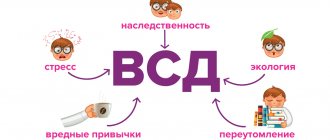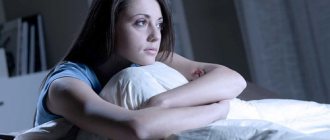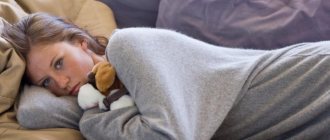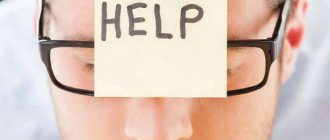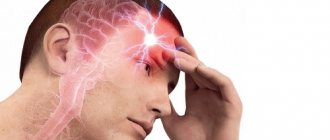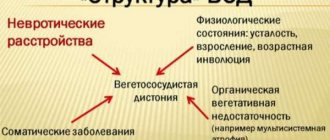Insomnia is an unpleasant phenomenon, it seems as if it is the curse of every person. When sleep is disrupted, a person's cognitive and behavioral functions decrease. Not only the physical condition, but also the psychological one, deteriorates significantly. The causes of insomnia are often hidden in psychogenic disorders and neuralgia. Let's look at the most common of them. What measures need to be taken to forget about insomnia forever?
VSD - what is it?
Vegetovascular dystonia (VSD) is a disease of the autonomic nervous system that leads to disorders of the cardiovascular system, psychological disorders (stress), and breathing problems. A symptom such as insomnia with VSD is quite common.
It should be noted that the term VSD is a little outdated. In modern medicine, such a diagnosis has not been made for a long time. VSD refers to a complex of symptoms, the source of which is not specified or identified. That is, today VSD is not considered a disease associated with the nervous system. But experts do not deny that certain disruptions at the psychological level occur during VSD.
Symptoms of VSD
VSD is not registered as a disease in the international classification; however, more than two thirds of the planet’s inhabitants experience manifestations of this disorder to a greater or lesser extent. Vegetative-vascular dystonia includes autonomic dysfunctions caused by somatic and mental illnesses, depressive disorders, and somatoform disorders. Exacerbation of VSD occurs during hormonal changes during puberty, pregnancy and the onset of menopause. The most common symptoms that appear are:
- pressure changes;
- migraine;
- sleep disorders;
- problems with cardiac activity, arrhythmia;
- difficulty breathing, feeling of heaviness in the chest;
- chronic fatigue;
- anxiety, panic disorders;
- psycho-emotional instability;
- asthenia;
- tremor;
- coldness and numbness of the extremities;
- dizziness and fainting.
Depending on the prevailing signs of VSD, diagnostic measures are prescribed aimed at identifying heart diseases, hormonal imbalances, abnormalities in the central nervous system and gastrointestinal tract, infectious lesions, checking the condition of the spine and vascular Doppler. It is important to identify and eliminate psychological problems that provoke the manifestation of VSD; for this it is recommended to consult a psychologist or psychotherapist.
Enter your pressure
Move the sliders
120
on
80
Causes of insomnia
Insomnia is divided into two types: a person cannot fall asleep at all or his sleep becomes intermittent with frequent awakenings. What causes insomnia? Of course, the primary reason is anxiety. Increased anxiety can be chronic or intermittent. Internal anxiety usually makes itself felt when a person finishes all his work and tries to accept a state of peace. At night, anxiety can be so severe that it can trigger panic. If such panic attacks occur frequently, you should consult a doctor.
The second reason is stress. Moreover, he is the main “provocateur” of the VSD. The appearance of stress is often associated with even small changes in normal life: troubles at work or school, in the family, even rainy weather. People who are emotional, impressionable and with a weak psyche perceive any changes quite acutely. During any stress, a certain malfunction occurs in the human nervous system. The area of the brain responsible for sleep shuts down and refuses to produce melatonin. In addition, during stress, adrenaline-like substances are released in the body, which affect the overexcitation of the nervous system.
Clinical manifestations
Insomnia that occurs with VSD is characterized by:
- attacks of dizziness;
- rapid heartbeat;
- headaches;
- tremor.
The sleep of a patient with VSD is disturbing. He has nightmares where he runs away from his pursuers or commits an act of violence himself.
Due to chronic insomnia, some people with sleep disorders develop depression. Patients often lose weight. The condition of the skin and hair deteriorates, intellectual abilities decrease, immunity and memory are weakened.
Insomnia with neurosis
Insomnia with neurosis affects 40% of patients with VSD. Doctors associate sleep disorders with neuroses. There is also such a phenomenon as a reduction in sleep duration. Frequent awakenings, continuous mental activity, fatigue are striking symptoms of insomnia with neurosis.
However, insomnia may be due to psychological reasons:
- professional stress;
- regular conflicts in the family;
- psychological trauma; usually traumatic events cause sleep disturbance;
- loss of a loved one;
- emotional sphere in which there is increased anxiety.
The cause of insomnia is always individual and subjective. The manifestation of symptoms may vary. For example, paradoxical drowsiness, with this phenomenon a person experiences a strong desire to fall asleep, but as soon as he goes to bed, he immediately awakens.
Another form of insomnia is shallow, superficial sleep. Often dreams are accompanied by nightmares and disturbing thoughts. If a person is diagnosed with hysterical neurosis, then as additional symptoms he experiences anger towards others.
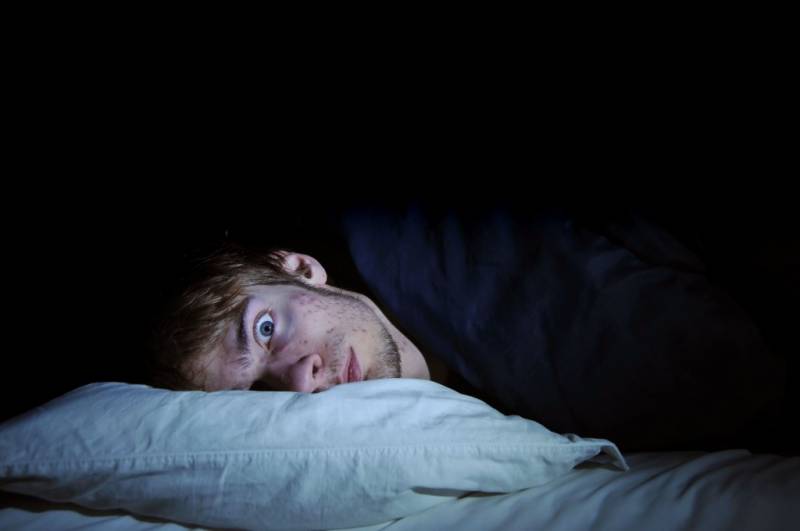
There is a third form of insomnia - neurotic phobia. It can form a vicious circle of anxious thoughts, followed by sleep disturbances. After many unsuccessful attempts to fall asleep, a person simply begins to fear insomnia. Consequently, the fear of not falling asleep turns into a phobia. This means that first you need to get rid of the phobia, and then - from insomnia.
Reasons for lack of sleep during VSD
Vegetative-vascular dystonia refers to a complex of many diseases, including insomnia. The reasons for lack of sleep in this case are the following factors.
- Internal diseases. Relaxing in the evening and falling asleep peacefully is problematic due to tachycardia caused by a lack of hemoglobin in the blood. Certain endocrine pathologies can lead to failure of hormones to control the progression of sleep.
- Hormonal changes. They are observed during menstruation, as well as in women preparing to become mothers.
- Personality characteristics. Sleep disturbance due to VSD is often observed in people who are suspicious and prone to anxiety.
- Neurotic disorders. Poor sleep is recorded in people suffering from neuroses, phobias, and panic attacks.
The choice of therapy is determined by the cause of insomnia. If lack of sleep during VSD is caused by internal pathology, then treatment should be carried out exclusively by a medical specialist. If insomnia is a consequence of a neurotic disorder, then the patient is able to normalize sleep independently, if desired and trying.
Sometimes insomnia is caused by certain medications used for vegetative-vascular dystonia, usually antidepressants. Sleep disturbances are also observed in people who abuse alcoholic beverages.
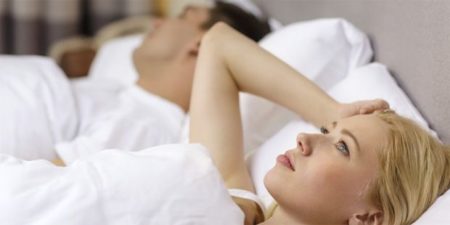
Insomnia with depression
Depression is a mental disorder in which three signs consistently appear: low mood, loss of positive thinking, impaired sobriety of perception (everything seems somewhat worse than it actually is), and stiffness in movements.
Insomnia is often a sure companion of depression. The human body is sensitive, therefore it immediately reacts to the mental state and its psycho-emotional background.
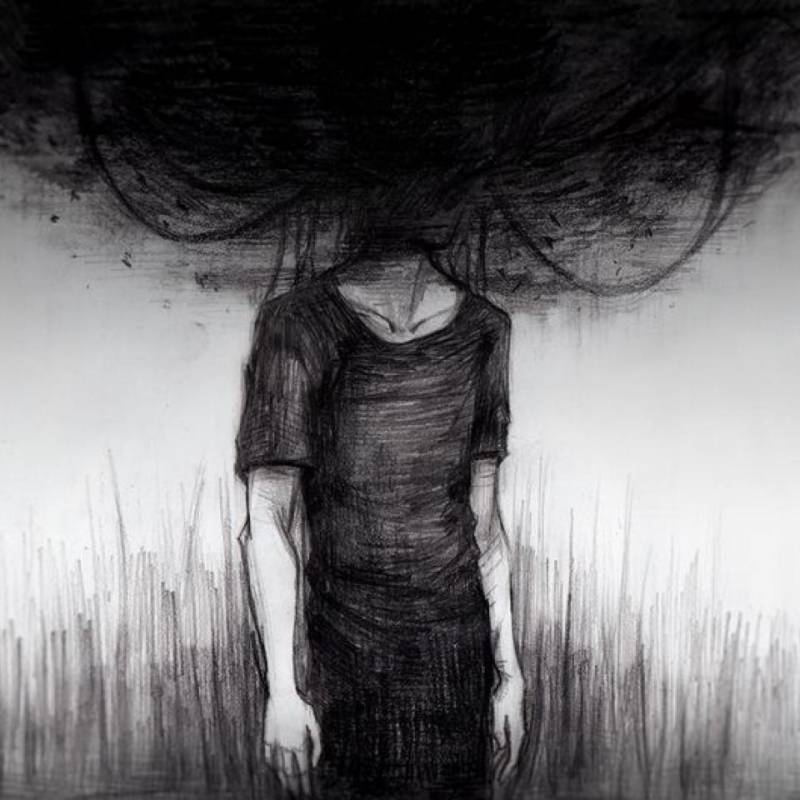
During an anxious state, insomnia is accompanied by early awakening, if you manage to fall asleep. The inability to “get enough sleep” for a few hours makes you angry. Usually waking up occurs from 4 to 6 o'clock. Repeated falling asleep can be combined with a light restless drowsiness.
Signs of insomnia
Insomnia can be characterized by the following manifestations:
- The simplest and most famous option is that a person cannot sleep at night. This condition is systematic, repeating several times a week, in severe cases - daily.
- During the day the patient feels weak and drowsy, but in the evening these symptoms disappear. When sleep time comes, a person does not feel tired and cannot fall asleep for a long time.
- Restless sleep, which is constantly interrupted due to extraneous sounds or disturbing dreams.
- The patient regularly wakes up at about 3 o'clock in the morning, after which he cannot sleep for a long time.
- The duration of sleep itself is reduced. If before the onset of VSD a person needed to sleep at least 9 hours, then with the onset of the disease, the time of night rest is reduced to 5-6 hours.
All of the above manifestations are signs of insomnia. If at least one of them is detected, you should consult a doctor and begin treating this condition.
Symptoms of insomnia
Insomnia with VSD is characterized by the following symptoms:
Often, VSD is an alarming signal of diseases of the nervous system: neurosis, asthenia, depression, etc.
If a person suffers from diseases of the nervous system, then insomnia has a number of features:
In addition to the above-mentioned disturbances with night rest, insomnia with VSD can occur due to the following somatic diseases:
Antidepressants taken can also affect the onset of insomnia. Also, problems with falling asleep occur in those who systematically abuse alcohol.
Additional Tips
There are several rules that will help alleviate sleep problems:
- the bedroom should be only for sleeping, with good sound insulation and a comfortable bed;
- at night you need to take short walks in the fresh air;
- do not watch TV at night if it is not a “sleeping aid”;
- be active during the day and devote the evening to calming activities, such as meditation or drawing;
- always ventilate the bedroom before going to bed;
- Set a clear schedule for waking and sleeping and try not to violate it.
If you take into account contraindications and listen to useful advice, then the problems will recede and life with VSD will take on a normal course.
Insomnia with VSD: how to deal with it
Control methods must be timely and comprehensive. You need to get rid of the fear that insomnia will occur. What to do with VSD? The following measures must be taken:
- If you can't sleep, stop trying. If you stop psyching yourself up for sleep, then the anxiety about not satisfying your desire for sleep will go away. The anxiety will pass and sleep will come. The main condition is to lie in bed. The moment of falling asleep will come unnoticed.
- Try to relax before going to bed and think about positive things. There is no need to engage in intense work activity before bed. It is better to postpone these activities for a day.

Before going to bed, it is advisable to listen to light, pleasant music, sounds of nature, or read a “light” book.
Prevention of insomnia
“I can’t sleep normally,” many modern people turn to doctors with this problem. Inadequate sleep is often the result of causeless anxiety and emotional turmoil provoked by VSD. But what to do in such a situation?
You need to learn to control your internal state, and for this you need to follow certain recommendations.
- You should not watch TV until late, surf the Internet, or read books with a creepy plot or difficult-to-read content.
- You can't overeat in the evening. Dinner dishes should be appetizing and easily digestible.
- It is advisable to take a shower or bath before going to bed.
- In the evening, you should not eliminate troubles or sort things out. It is better to postpone these unpleasant activities until the next morning.
If the above measures do not help cope with insomnia, then you should definitely go to a medical specialist. Only competent and timely treatment of VSD will help avoid serious health problems.
Treatment
People suffering from VSD and insomnia should consult a psychotherapist. Usually no medications are prescribed. But if insomnia does not go away for a long time, then the patient is prescribed medications. One of the popular drugs for insomnia today is Persen Night. But is he really able to help?
“Persen for insomnia” is made from plants, so it will not cause any harm to the body. It is intended for oral use. “Night Persen”, the price of which is approximately 200 rubles, is intended to eliminate insomnia only at night. You should drink it only before bed. It is not recommended to take the drug continuously for more than 7–9 weeks.
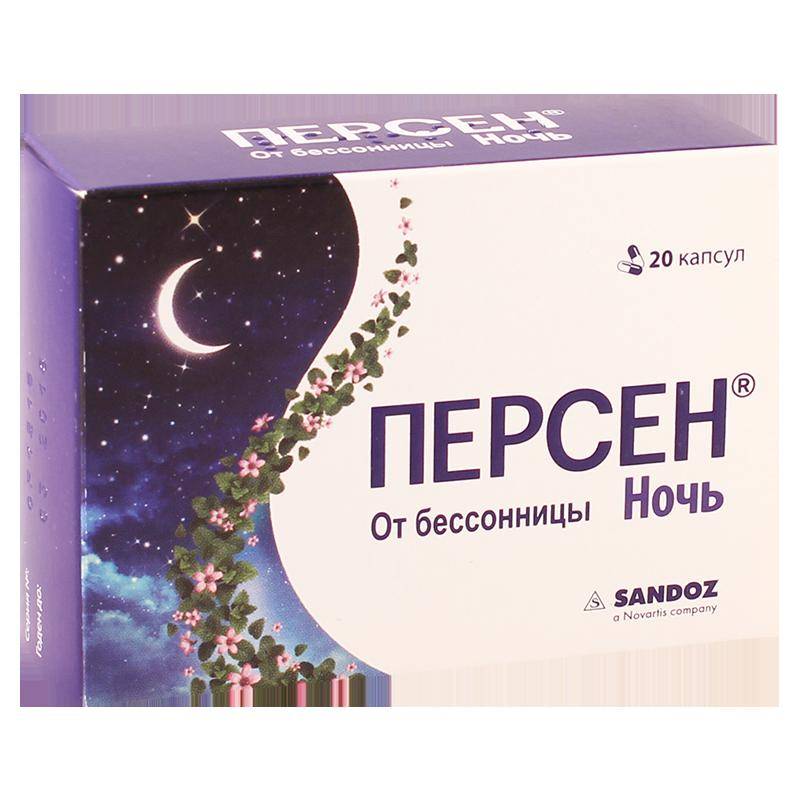
Valerian root is good for insomnia. It reduces the excitability of the nervous system and improves neuroregulation of the heart. Valerian root and Persen, the price of which is not much higher than the first remedy, have a double effect in the fight against insomnia. At least that's what experts say.
Folk remedies safe for dystonia
In addition to the medications prescribed to a patient for dystonia, he can drink medicinal tinctures and decoctions made from medicinal plants and herbs. However, before you start taking such recipes, you should definitely consult your doctor, as taking teas incorrectly can worsen your current health condition.
Traditional recipes help:
- get rid of nightmares;
- normalize your sleep schedule;
- eliminate spasms and eye twitching, which are considered signs of VSD;
- save a person from waking up at night;
- make your sleep more sound.
It is worth taking folk recipes after 2-3 weeks of insomnia, when the body needs proper rest.
Attention! Traditional methods cannot be addictive, which means that after normalizing your night's sleep, you can easily stop drinking them.
People who have a tendency to develop allergies should use alternative treatment with caution.
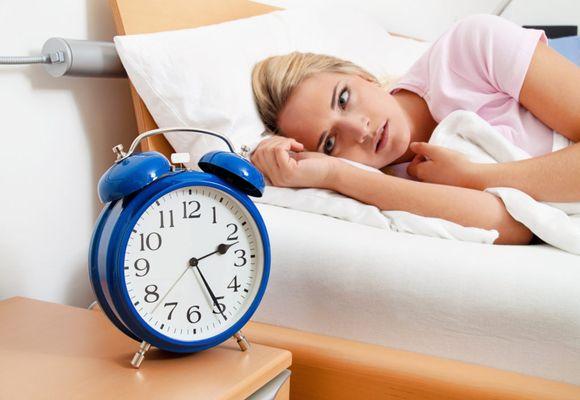
The most famous remedies for insomnia:
- You can make a tincture that calms the central nervous system. To do this, take crushed valerian root (a teaspoon) and then pour a glass of boiling water. After this, the infusion should be left for 2 hours. To cure insomnia, you need to take 100 ml of medication. This is done before bedtime.
- To make a medicinal decoction, you need to mix 500 ml of wine (preferably red) with 50 grams of dill seed, then boil the mixture for 20 minutes. Then the broth is removed from the stove, cooled and filtered. It is recommended to drink 2 tablespoons before bedtime.
- Hemp seed tincture: take 40 grams of seeds and pour 250 boiling water. Leave the liquid to infuse for 40 minutes. The infusion should be drunk warm - half 30 minutes before bedtime, and the rest before putting it to bed.
- Lavender oil will help you fall asleep quickly and soundly - to do this, you need to take it out and apply a small amount to your temples or hands.
- Chronic insomnia can be easily cured by taking sleep herb tea. Take 15 inflorescences of the plant and pour boiling water into a glass. In 15 minutes the healing tea will be ready. You should drink it before bed to relax the body and calm the central nervous system.
Such folk recipes should be made only after they have been prescribed by a doctor.
Electrosleep: indications and contraindications, reviews
Electrosleep is a procedure that is performed using a special device. During the procedure, a person is given weak pulses of low-frequency current through electrodes that are pre-fixed to the eyelids.
Along the optic nerves, through the eye sockets, the current pulse enters the vessels and the brain. Thus, the work of the nervous system slows down and a drowsy state occurs.
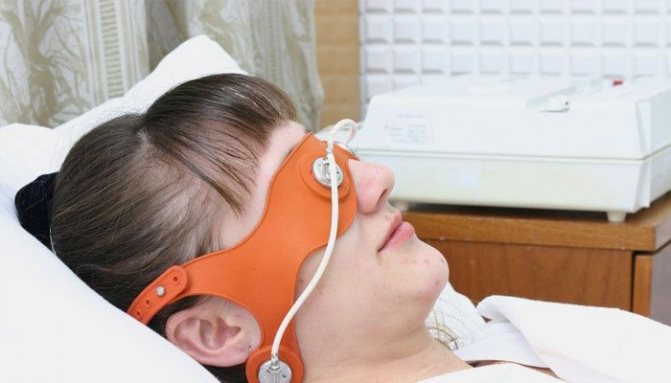
In one session, lipid and carbohydrate balances in the brain structure increase. Its functionality is normalized.
One procedure lasts 60 minutes. The required number of sessions is from 10 to 15.
Indications for electrosleep:
Judging by the reviews, electrosleep speeds up metabolism in the body and improves blood clotting.
Contraindications:
Additional measures
In addition to the use of homeopathic and medicinal preparations, the behavior of the patient himself can affect the restoration of sleep during VSD. Knowing the problem you are facing, you can make every effort to quickly get rid of it. To do this, you just need to adjust your lifestyle.
To sleep peacefully and soundly, follow these rules:
- Avoid vigorous physical activity in the afternoon. Muscle tension can cause nervous system stimulation, which can prevent you from sleeping well.
- Avoid excessive mental activity before bed, and don’t finish projects until late at night. The brain, being in good shape just a few minutes ago, will not be able to quickly relax for a night's rest; it needs time to prepare, and you must provide it.
- Do not watch TV or read e-books before bed, do not sit at the computer. The light that these devices emit inhibits the production of melatonin, the sleep hormone, so you won’t be able to rest properly at night.
- Avoid receiving negative information before going to bed, don’t quarrel with anyone or sort things out, leave it until the morning. Try not to watch news and films that put your psyche in tension, otherwise you may encounter nightmares and poor superficial sleep.
- Don't plan for tomorrow and try to abstract yourself from everything. A proper rest is possible only if your thoughts are not occupied with “important matters.” When your eyes close, your brain still cannot adjust to rest and continues to work actively, which is why you may see unfinished work in your dreams, relive your previous day, etc.
- Don't overeat at night. Provide yourself with a light dinner no later than 20:00. Fatty, heavy food eaten in large quantities before bedtime interferes with normal sleep, and lovers of late-night snacks often have nightmares in their sleep.
- Maintain a rest routine. It is best to go to bed at 22-24 hours, but keep in mind that if you are not yet ready for a night's rest, you should not take a horizontal position in bed. It is important that you develop a clear association: bed = sleep. Wake up at the same time even on weekends, this will help to establish a schedule.
- Eliminate caffeine-containing drinks, energy drinks, alcohol from your diet after 15:00, and also try not to indulge in sweets. All these products increase the excitability of the nervous system and interfere with normal sleep.
- Stop smoking; this habit is especially dangerous for people with VSD, so it needs to be eliminated. Instead of smoking a cigarette, eat a vegetable or fruit, so you will get more benefits.
- Take baths before bed, add herbal infusions or essential oils to them. This will help you completely relax and fall asleep quickly.
- Ventilate the room before going to bed; it should be cool, not hot. It is best if the window in the bedroom is open all night.
- Maintain good sleep hygiene. Choose a comfortable mattress, an orthopedic pillow and soft-touch bed linen, sleep in comfortable pajamas, it is advisable that during your night's rest your body is not burdened by clothes at all. Close curtains and doors tightly to prevent noise and light from disturbing your sleep.
Acupuncture is the best treatment method
Treating insomnia with acupuncture is a common procedure. With its help, bioactive points are activated, which are responsible for the functioning of many functions of the body, in particular the nervous system.
Acupuncture is carried out using special medical needles, the thickness of which is no more than a human hair.
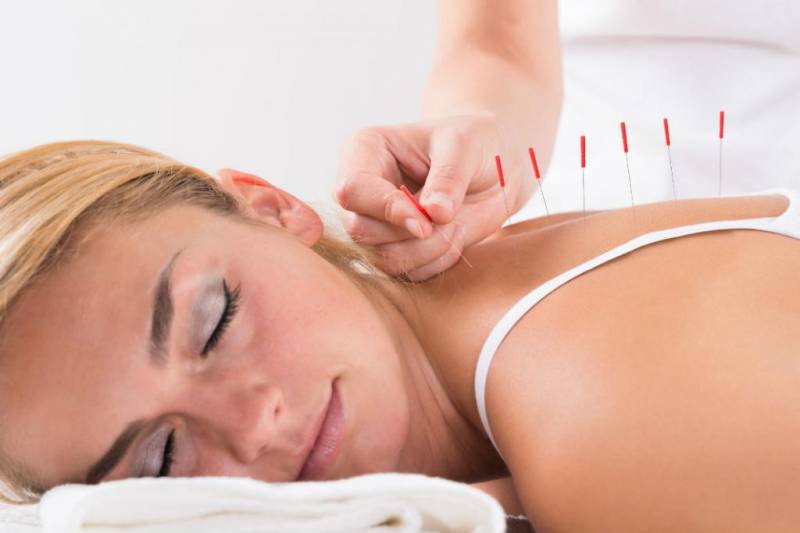
When needles are inserted, reflex processes begin in the nervous system, which increase stress resistance. In addition, acupuncture stabilizes a person’s emotional background. Accordingly, this is a positive technique in the fight against insomnia.
One session – 30 minutes, the procedure is painless. Acupuncture eliminates the cause of insomnia without taking medications or side effects.
Treatment of insomnia
Before starting treatment with medications, experts advise trying various types of relaxing techniques. Here are just a few of them:
- Relaxation according to Jacobson. This is a special technique that includes a set of exercises to relax individual muscle groups.
- Relaxation using the Jacobson method. Consists of three phases: tension-relaxation, observation, relaxation of consciousness.
Each of these two methods helps to reduce anxiety levels and tidy up the nervous system. As a result, sleep becomes deeper and more peaceful, anxiety goes away and panic attacks at night recede. Relaxation according to the Jacobson method includes exercises for various muscle groups.
- For legs. It is necessary to bend and tuck your toes, increasing the compression force. Hold at the maximum moment for a few seconds, and then relax. Repeat the exercise several times. It is important to concentrate on different sensations and remember them. The next exercise for the leg muscles is to tense and relax your extended toes. Then raise your legs from the surface by about 15 cm, and hold this for some time. Then lower and relax.
- For arm muscles. Clench your right hand into a fist for a few seconds and then relax. Repeat with the left hand, and then with both. Bend your arm at the elbow, tighten your biceps, then straighten and relax. Repeat with the other hand, and then with both. Strain your arm, biceps, triceps, and hand at once, pressing into the floor. In turn, you need to repeat with each hand and simultaneously with both.
- Abdominal and back muscles. You need to take a deep breath and at the same time tense your abdominal muscles. Stay in this position for a few seconds, and then exhale and bring the muscles into a relaxed state. In a lying position, you need to lean on your elbows, heels and shoulders, while raising your hips. You need to stay in this position for a while, then lower your pelvis and relax. You can do it differently - raise your chest above the floor, while leaning on the back of your head and elbows.
- Heads and faces. Press your chin to your chest while lying on the floor. The shoulders should, on the contrary, be pressed to the floor. Again the state of relaxation and tension alternates. Alternate relaxation and tension of the jaw muscles, four to five times in a row, and then listen to your feelings. It is also useful to wrinkle your forehead, hold it in this state for a few seconds and relax. Place the tip of your tongue against the roof of your mouth and remain in this tension for several seconds, then return everything to its original position. Make the same alternation with the eyelids, closing them and relaxing them.
- Final exercise. As a result, it is necessary to simultaneously tense all the muscles of the body and remain in this state for several seconds, and then relax as much as possible.
The Jacobson method of progressive muscle relaxation is great for everyday use. It is very important during the full complex to be in complete harmony with yourself and, when relaxing, to concentrate on the difference in sensations.
